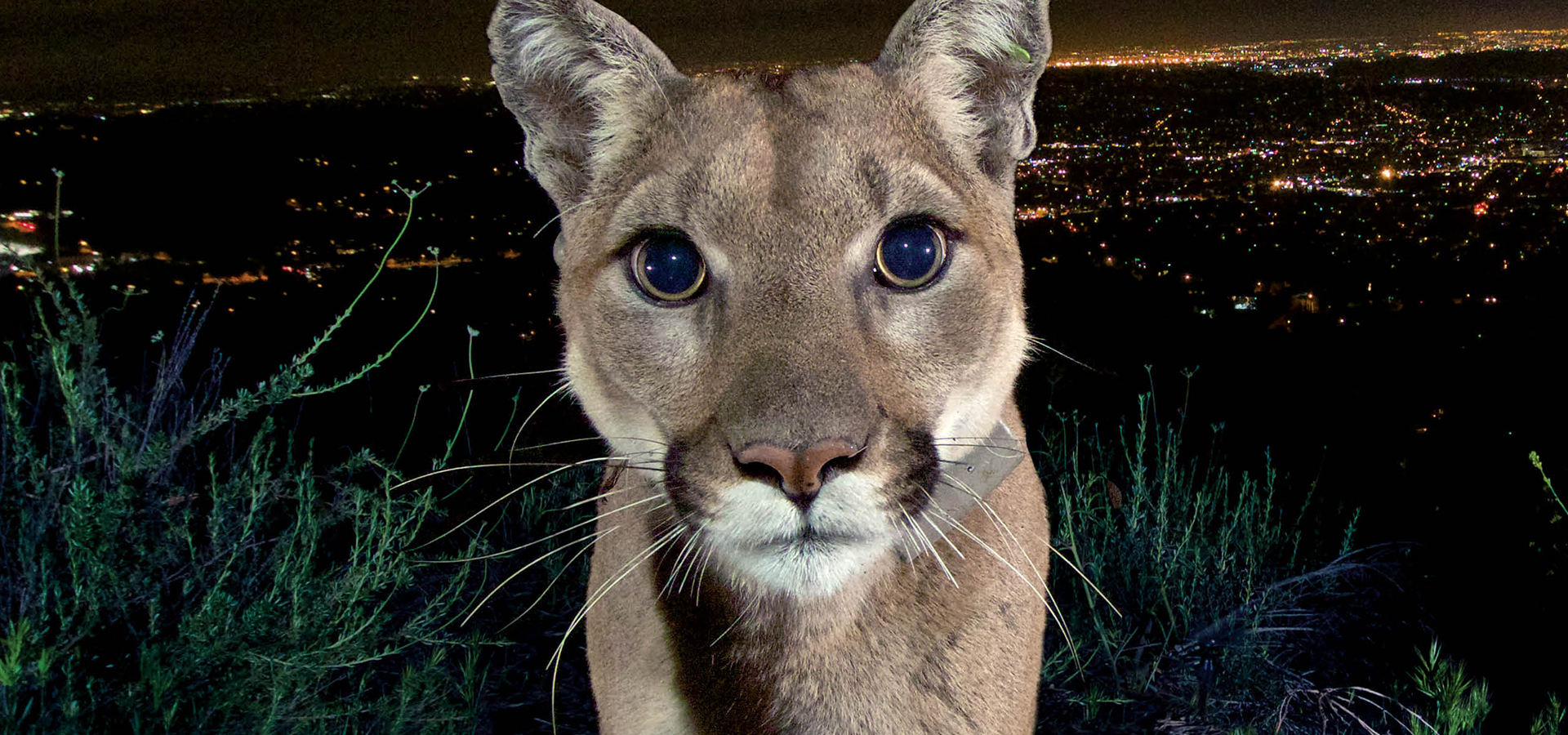An Effort to Save Endangered Mountain Lions
Hemmed in by deadly freeways, the Santa Monica Mountains’ iconic cougars are facing near-certain extinction. What local groups are doing to provide them with a safe passageway in their hunt for suitable mates—and to ensure their future.
-
CategoryPeople
-
Written ByAnne M. Russell
-
Photographs Courtesy ofThe National Park Service
Most of us Valley dwellers enjoy the beauty of the Santa Monica Mountains. As we pass them each day, we see them as a gorgeous, seemingly open and endless expanse. But for the animals that live there, in what essentially is a national park, the hilly terrain may as well be an island.
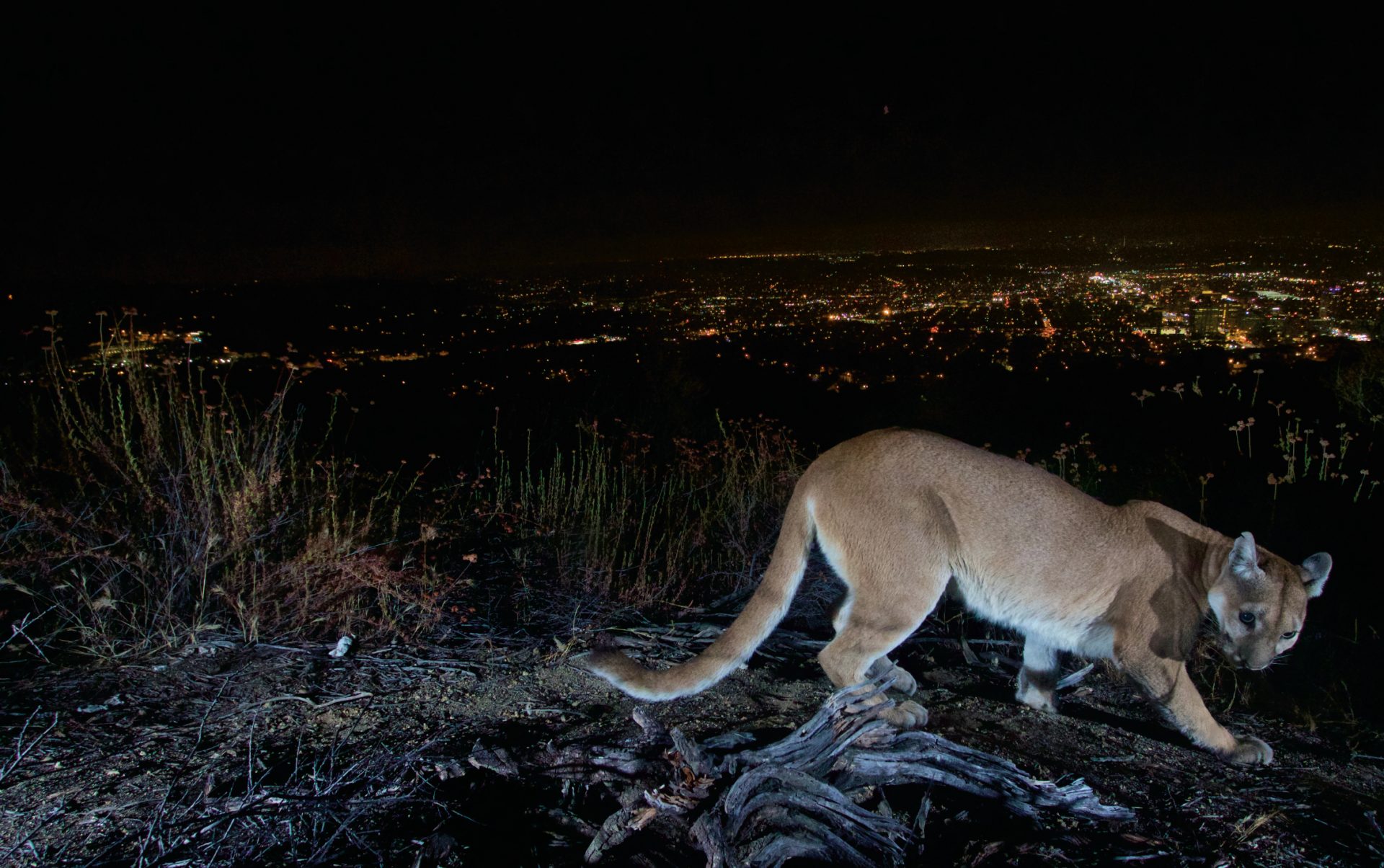
Most of us Valley dwellers enjoy the beauty of the Santa Monica Mountains. As we pass them each day, we see them as a gorgeous, seemingly open and endless expanse. But for the animals that live there, in what essentially is a national park, the hilly terrain may as well be an island.
No animal is suffering more from the consequences of living in a circumscribed territory than the West’s native mountain lions. Confined by high-speed freeways that prevent them from accessing new mates, the lions are breeding with their own family members. An academic study published last year predicts that the Santa Monica Mountains’ lion population will suffer genetic collapse—known to scientists as “inbreeding depression”—within 50 years, leading to their extinction.
Even good news—the August discovery of two darling kittens known as P-59 and P-60—was tempered by the fact that they are the product of generations of feline incest. Their father is P-12, who is also the father of their mother, P-53, as well as their mother’s mother and their mother’s grandmother.
“We don’t want to find out what happens when the last large carnivore is gone. It’s not an experiment we want to conduct.”
The kittens’ sire P-12 (the P in the naming system stands for “puma,” which is the scientific name for mountain lions) had the rare good fortune to successfully cross into the Santa Monica Mountains from the north, meaning that he survived traversing eight lanes of speeding traffic on the 101. Most mountain lions aren’t so lucky.
Being locked on a small island has two consequences for the big cats, both lethal. When male kittens mature and seek to establish a territory and find a mate, they run into conflict with the dominant males, resulting in a fight to the death. “The No. 1 cause of cougar mortality is cougar-on-cougar. They can’t get out of each other’s way. These cats are on top of each other,” explains Beth Pratt-Bergstrom, the National Wildlife Federation’s regional executive director for California and point person for the fund-raising campaign Save LA Cougars.
The other main danger occurs when driven by the desire for unclaimed turf, the young cougars take their chances crossing the 101 or 405, which can and does result in fatal (to them) vehicle collisions. Animal-car crashes injure humans, too. Last year they cost Californians $276 million in property damage and personal injuries—not to mention the cost of lost time and frustration due to traffic disruptions.
The National Park Service has been tracking and studying the Santa Monica Mountains’ cougar population since 1996, and at any given time has radio collars on 8 to 10 of the 10 to 15 resident lions.
“Mountain lions are the last large apex predators left,” says Seth Riley, PhD, a wildlife ecologist with the Park Service, who has worked on the study since its inception. Southern California’s native grizzly bears and gray wolves are long gone, he notes. (The black bears that are residents of the San Gabriel Mountains are non-natives, having originally been brought down from Yosemite by humans, Dr. Riley explains.) “We don’t want to find out what happens when the last large carnivore is gone. It’s not an experiment we want to conduct,” he says.
“We don’t want to find out what happens when the last large carnivore is gone. It’s not an experiment we want to conduct.”
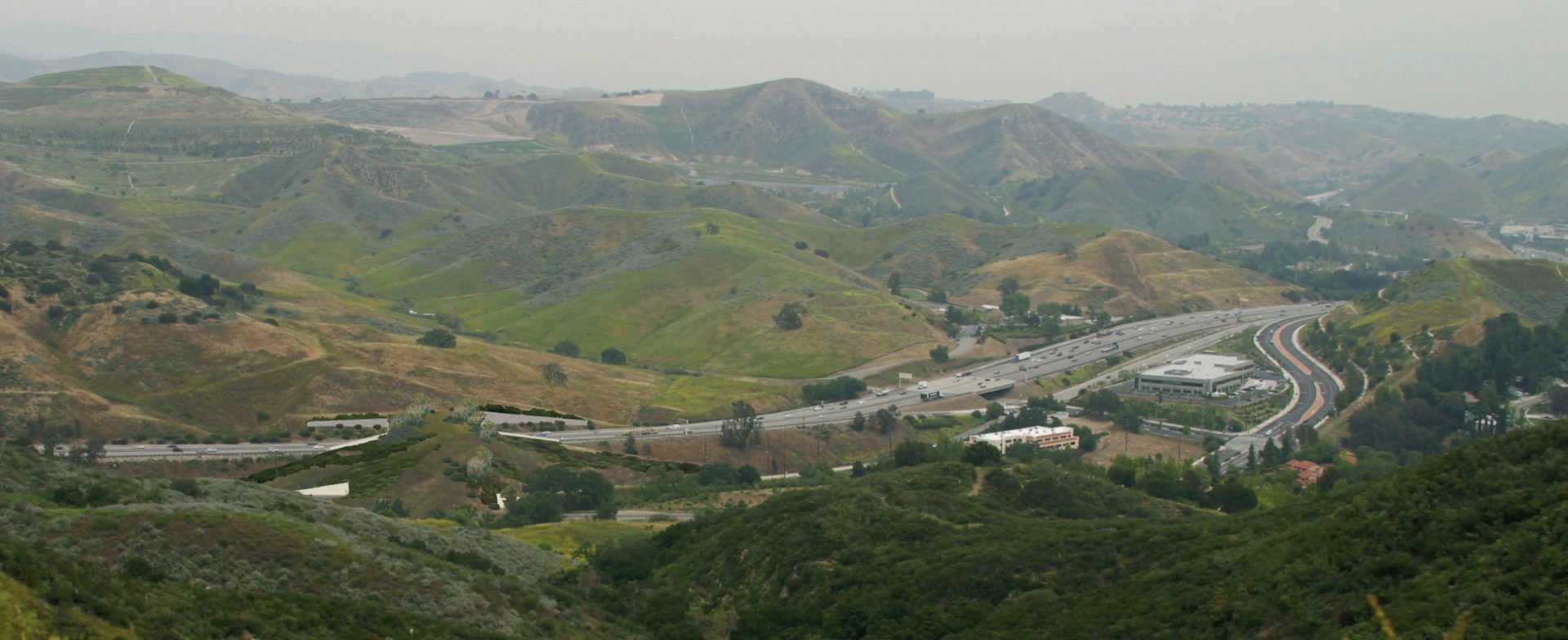
Road to Freedom
The cougars’ last, best—and only—hope for the freedom of movement critical to survival lies in the construction of a wildlife overpass. A diverse group of public and private agencies are now working to make that happen.
A small stretch between the Liberty Canyon and Chesebro freeway exits in Agoura Hills is the only area where there is open space on both sides of the freeway. Plus at night, it’s the darkest spot along the 101 because there are no street lights and development is sparse on either side. “The land is already protected,” says Pratt-Bergstrom. “There’s no bad guy here.” (She means no threat of eminent domain being exercised on private landowners.)
“There’s almost nowhere left where there’s natural habitat on one side of the freeway, much less both sides,” says Dr. Riley. “This wildlife crossing would be a pretty cool thing.”
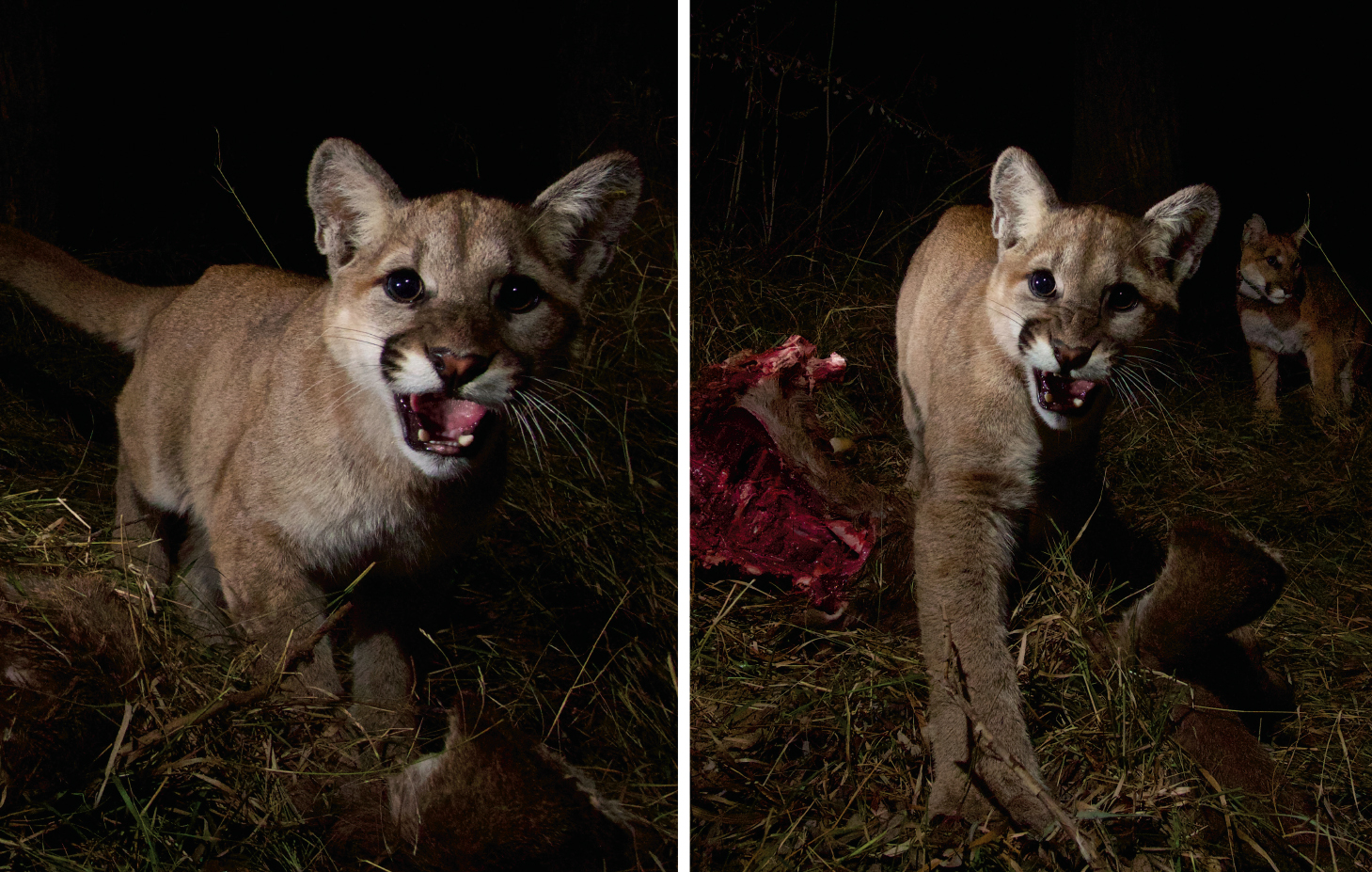
But Will They Come?
One of the most common inquiries Pratt-Bergstrom and Riley field at educational events is, “How will the animals find the crossing?” After all, wildlife can’t read signs or access social media.
One answer is suggested by the pings transmitted from the radio collars, which occasionally show lions prowling the margins of the freeways after dark, apparently looking for a safe exit. Inevitably, most turn back to take their chances against fellow cougars in the overcrowded mountains.
Other evidence comes from images from an old camera trap in an underpass along the 118 Freeway that caught nighttime photos of cougars strolling through the tunnel from points north, such as the Los Padres National Forest.
In fact, it was a remote camera that revealed the startling fact that P-22, a young male, had miraculously crossed both the 101 and 405 to claim the urban island of Griffith Park as his home range back in 2012. During a routine review of images, Natural History Museum of Los Angeles County wildlife biologist Miguel Ordeñana was stunned to spot an image of P-22 walking away from the camera.
In the new documentary by Tony Lee, The Cat That Changed America, about P-22 and the dangers that LA’s cougars face, Ordeñana says even after five years of solitary existence in Griffith Park, P-22 still makes what’s known as a “contact call,” vocalizing to seek the presence of other mountain lions.
This raises another common question: “Why can’t the Park Service or Department of Fish and Wildlife bring the now-middle-aged P-22 a girlfriend since he already has his own Tinder account and Facebook page?” The simplest answer is that it’s not within either agency’s mission to interfere in natural ecosystems. The more complex answer, however, is that even if they did, it might not have a happy outcome.
Male mountain lions need territorial ranges of around 250 square miles apiece and P-22 is squeezed into a mere 8 square miles in Griffith Park. Although it is rare for a male mountain lion to kill a female, it happened in 1999 near Malibu Creek State Park when the late P-1, the first tracked cougar, killed his mate, P-4. Perhaps she was defending her kittens; the wildlife biologists don’t know for sure, but the animals’ inability to get away from each other certainly does contribute to fatal fights.
Although there is strong public support for the wildlife crossing, including from some of the area’s homeowners associations and donors as far away as Hong Kong and France who have contributed $3 million to date, there is also the predictable fear that anything new engenders.
The two-year environmental review for the wildlife crossing is complete and now open for public comment. Among the concerns: that the bridge will cause a flood of mountain lions to pour into the Santa Monica Mountains. Given that male mountain lions ideally require 250 square miles of territory and the whole of the Santa Monica Mountains National Recreation Area (SMMNRA) is only 275 square miles, this is not a realistic worry. If anything, we are likely to see an exodus, as the uncomfortably crowded cougars are finally able to disperse, via the Simi Hills, to points north.
Because the crossing as proposed is multiuse for hikers, mountain bikers and horseback riders, some people have wondered aloud whether cougars might lurk there to pick off unwary humans. Again, according to actual data, this is a senseless fear.
Says Arthur Eck, chief financial officer of the Santa Monica Mountains Fund (SAMO), which is NWF’s local partner in Save LA Cougars, “Based on where the radio collars indicate the mountain lions are at given times of day, the collective bunch of lions probably sees a couple thousand people a day.”
In other words, our cougars have ample daily opportunities to attack and eat people. Yet despite that, there have been no documented attacks on humans in SMMNRA. On the contrary, all evidence shows they simply don’t want to be around people and would much prefer to hunt and consume deer.
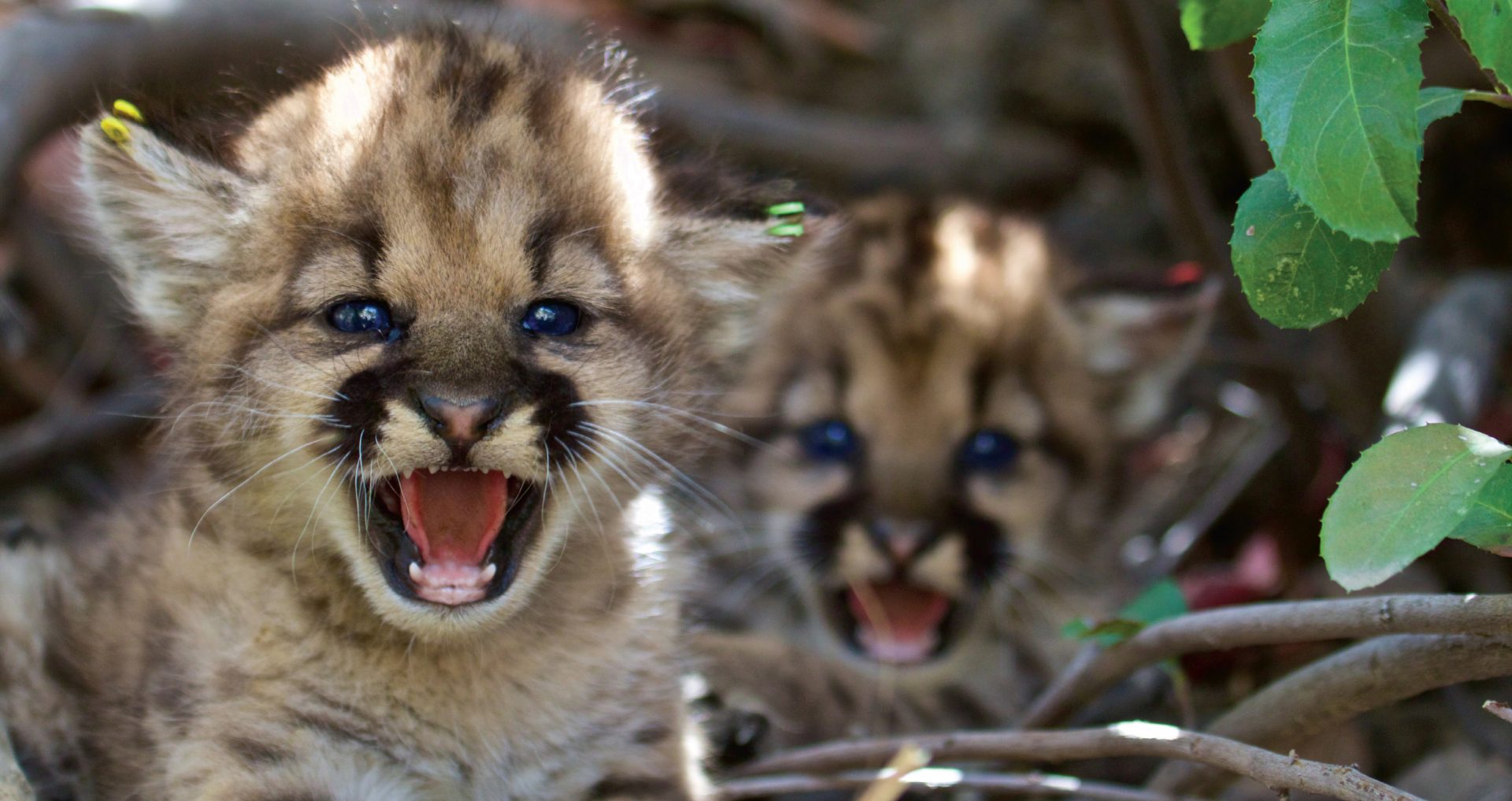
Next Hurdles
To get to Phase 2—the creation of the final design and construction plan in 2018 and 2019—more money is needed. SAMO and NWF will continue with their joint fund-raising efforts and hope that more big donors will step up. The Annenberg Foundation has already pledged $1 million.
Former State Senator Fran Pavley, who left the legislature last year after 14 years in office, is working part-time as an environmental consultant for Save LA Cougars. She lives in Liberty Canyon, so the wildlife crossing is literally close to home. And she was instrumental in some of the historical decisions that have made it possible. “Liberty Canyon Road was going to go straight through [what is now Malibu Creek State Park] to Mulholland,” she recalls. “In the early ‘80s, the county planning commission had approved 460 apartments for Liberty Canyon.”
To defend its turf against overdevelopment, Agoura Hills incorporated in 1982 and elected Pavley its first mayor. She facilitated the purchase of the disputed Liberty Canyon land by the Santa Monica Mountains Conservancy and also helped fend off the construction of a medium-security prison in what is now the very popular Chesebro State Park. “It’s been a concerted effort over the last 30 years to acquire the land,” she says.
It’s indeed ironic that land that was designated to house a human prison may prove to be the key to freeing our mountain lions to roam as nature intended.
Learn about P-22 and his cohort during the second annual Urban Wildlife Week October 15 to 22. It culminates the last day with a festival at Griffith Park. More at urbanwildlifeweek.org and nwf.org/save-la-cougars
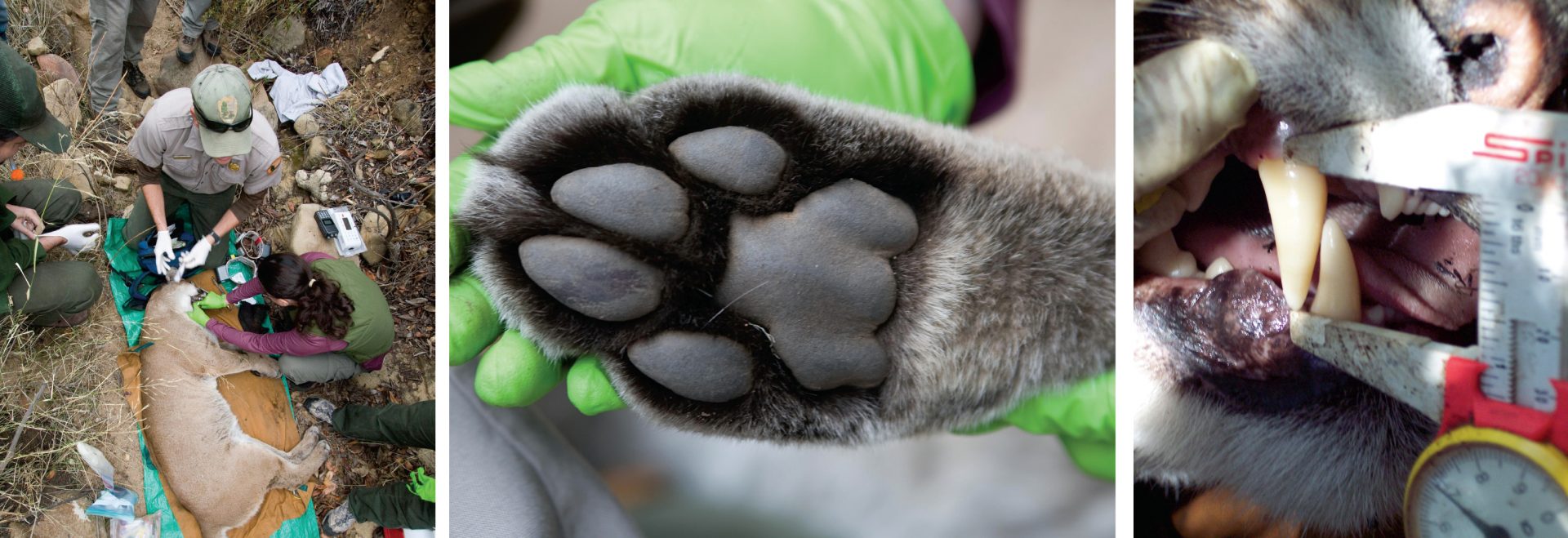
Join the Valley Community






